Elite athletic performance at youth level is no guarantee of ultimate success

In previous blogs we have looked at the ideas surrounding the area of early specialization and how this can have negative effects in terms of an athlete’s hopes of making it at the top level in their chosen sport. Among the drawbacks that have been identified are over-use injuries, burn-out and the reduced possibility of pursuing exercise in adulthood. Another reason to avoid early specialization has been put forward at a recent sports conference which suggests that those who are identified as elite at a young age are not guaranteed to make it at senior level. One of the reasons is that this prevents them from developing the range of skills often needed to make it to the top. Professor Dr Arne Güllich, Head of Department of Sport Science and Director of the Institute of Applied Sport Science, Kaiserslautern University of Technology, argues that being an elite youth does not guarantee success and points out that there is no correlation between success at a young age and success at senior level. Most of us are aware of athletes who went on to become stars in their sport despite not being identified as elite at a young age. For example, basketball star, Steve Nash, didn’t take up the sport until he was 13 yet he was twice named NBA Most Valuable Player. Also there was Ashton Eaton, who went on to become double Olympic and World Champion at decathlon, despite the fact that he hadn’t competed in six out of the ten disciplines before starting university.
There are also stars such as the Neville brothers, Gary and Phil, who went on to represent Manchester United and England at soccer, and tennis legend, Boris Becker, who competed at a high level in other sports before making the breakthrough. It has been asked if these examples are just the exception, but research suggests that those who haven’t been identified as elite at a young age are not excluded from making it at the highest level, or that it is necessary to specialize in one sport.
Junior success is a poor indicator
Dr Güllich is one who subscribes to this point of view and he shared his research findings at the 2016 Youth Athlete Development Conference in Singapore when he stated categorically that success at a young age could not predict success at adult level.
Junior success is a poor indicator of long-term senior success. Their success at the age of 10 had a zero correlation with their success as a senior. Same was true with their success at 11-14, 15-18. We have a zero correlation
Professor Güllich highlights the difficulty in predicting a youth developing into a top senior athlete by calculating that
the probability of a positively identified talent to actually become an international senior athlete is 0.2 percent
He used the German football’s Talent Development Program as an example of the difficulty in identifying future elite athletes and states that those who make it at the top level tend to develop on a gradual basis over the years. Professor Güllich gave an example from the German football Talent Development Program system to show that the most successful seniors were not selected particularly early.
Of those who were recruited at an age of under 11 or under 13, at the age of under 19, only 9 percent are left. On the other hand, those who made it to the national A team of Germany, those we see in the World Cup for example, were being built up gradually across all age stages. The population of senior top athletes emerges in the course of repeated selection, de-selection, and replacements across all age stages rather than developing from those early selected
His research also highlighted the fact that a common characteristic of elite athletes was that they had did not specialize at an early age. For example he points out that many German Olympic medalists only focused on their main sport at the age of 20, having played two or three other sports at a high level up to that point.
The world-class athlete differs from those who made it only to national class, not by having engaged in more sports specific training in their main sport, this was indifferent, or they even trained less at a young age at their later main sport, but consistently, they engaged in more activity in other sports
Benefits of multi-sport activity
This point of view is backed up as in Overuse Injuries and Burnout in Youth Sports we are told that
diversified sports training during early and middle adolescence may be more effective in developing elite-level skills in the primary sport due to skill transfer
It is also a view put forward by John O’Sullivan in Can you guess the one thing that most elite athletes have in common? when he states:
To be an elite level player at a college or professional sport, you need a degree of exceptional athleticism. And the best medically, scientifically, and psychologically recommended way to develop such all around athleticism is ample free play and multiple sport participation as a child
Don’t ignore the late bloomer
Professor Güllich’s research indicates that early identification of talent is not an accurate indicator of an athlete’s ability to make it at elite level. One of the main reasons for this is that many young athletes are trying out a variety of sports and picking up the skills that will be instrumental in making it to the top when they finally select one sport to focus on. The lesson of Professor Güllich’s research is that just because an athlete doesn’t reach the top level at a young age, they still have a chance to make it at elite level and this point is emphasised by Brooke De Lench in Early and Late Bloomers in Youth Sports: Lessons for Parents who reminds us that reminds us that every child ‘is on their own unique developmental timetable’ and that those who develop their talents over a longer period should not be ignored but instead encouraged to make progress.
Some children – even if they appear to only be average athletes or lag behind their peers – may be late bloomers whose athletic talent will only become apparent later when they are teenagers; they may ultimately be more gifted athletes. The unfortunate fact is that, in a society and youth sports culture that places such a heavy emphasis on winning, an early bloomer enjoys advantages that may continue long after peers have caught up and, in many cases, passed him in terms of skill proficiency. As a result, a late bloomer will be put at a significant disadvantage in getting the attention of coaches and the playing time he needs to develop his skills, and may get so frustrated that quitting the sport becomes the only viable option
Please share this post so others may benefit.
About Metrifit
Metrifit is an athlete monitoring system that gathers subjective and objective information from both coaches and athletes to drive behavior modification and improvement through insights modeled on descriptive and predictive analytics. It sounds complicated but Metrifit prides itself on its simple intuitive interface and advocates a simple effective approach that doesn’t overwhelm the athlete or the coaching/staff member. It has received high praise for its intuitive interface and it allows monitoring to be scaled for all levels of athletes and teams. Recent research by Anna Saw (Deakin University, Australia) has shown that use of Metrifit is associated with increased athlete sporting self-confidence. Metrifit is ‘athlete-centric’ helping to develop self-awareness, encourage creative thinking and emotional intelligence as well as developing ownership and responsibility within the athlete for their own success.
To find out more information please visit Metrifit Overview or contact us at
References
Can you guess the one thing that most elite athletes have in common? | John O’Sullivan
Junior success is a poor indicator of long-term senior success – Professor Dr. Arne Güllich
At What Age should Children Specialise in Sport? | Metrifit
Early and Late Bloomers in Youth Sports: Lessons for Parents | www.momsteam.com
Overuse Injuries and Burnout in Youth Sports: A Position Statement from the American Medical Society for Sports Medicine
#nysiTALKS – Youth Athlete Development Conference 2016






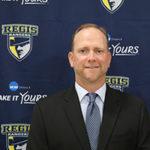







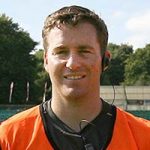
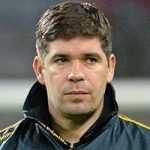
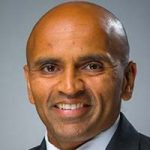





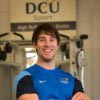









 Previous Post
Previous Post Next Post
Next Post





